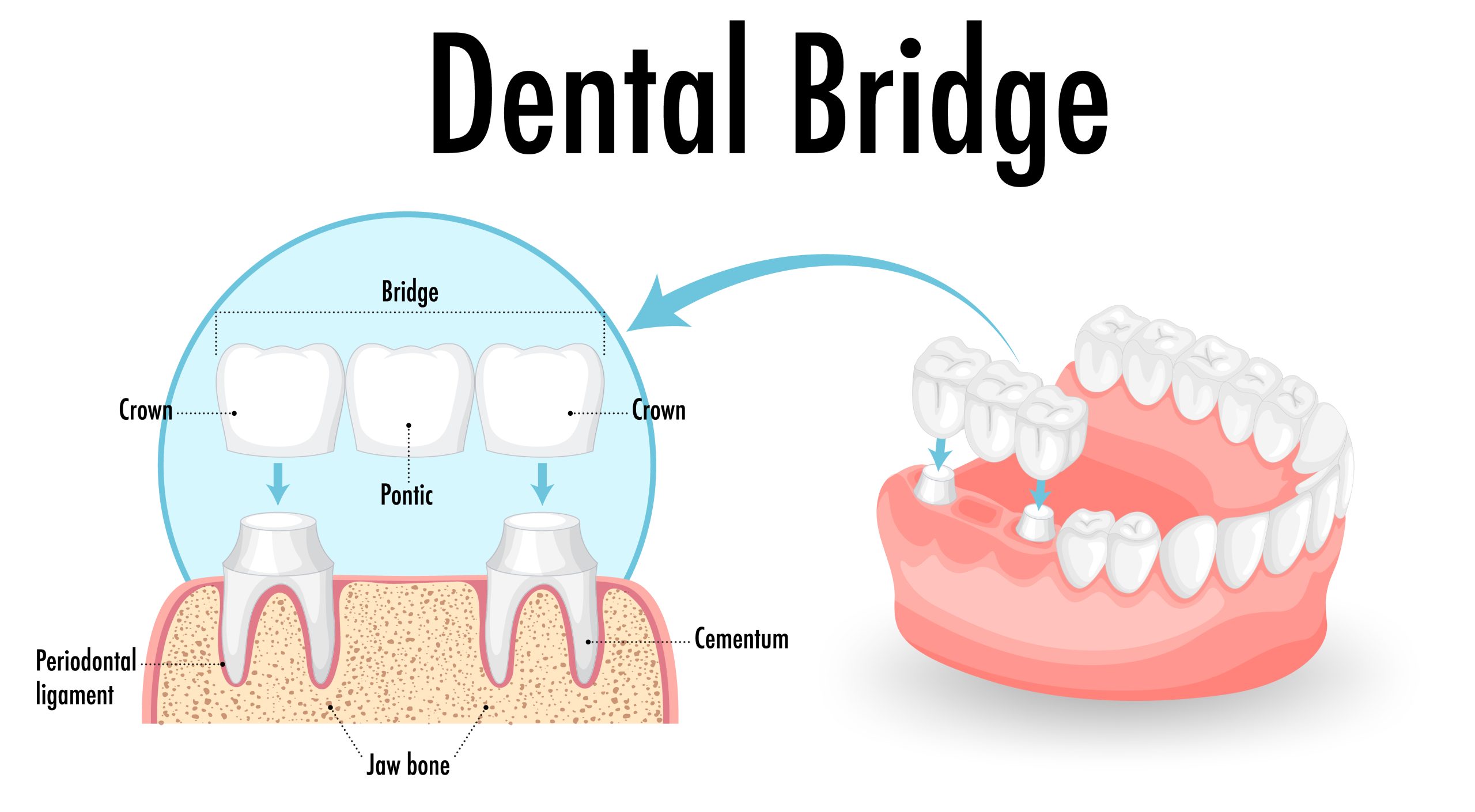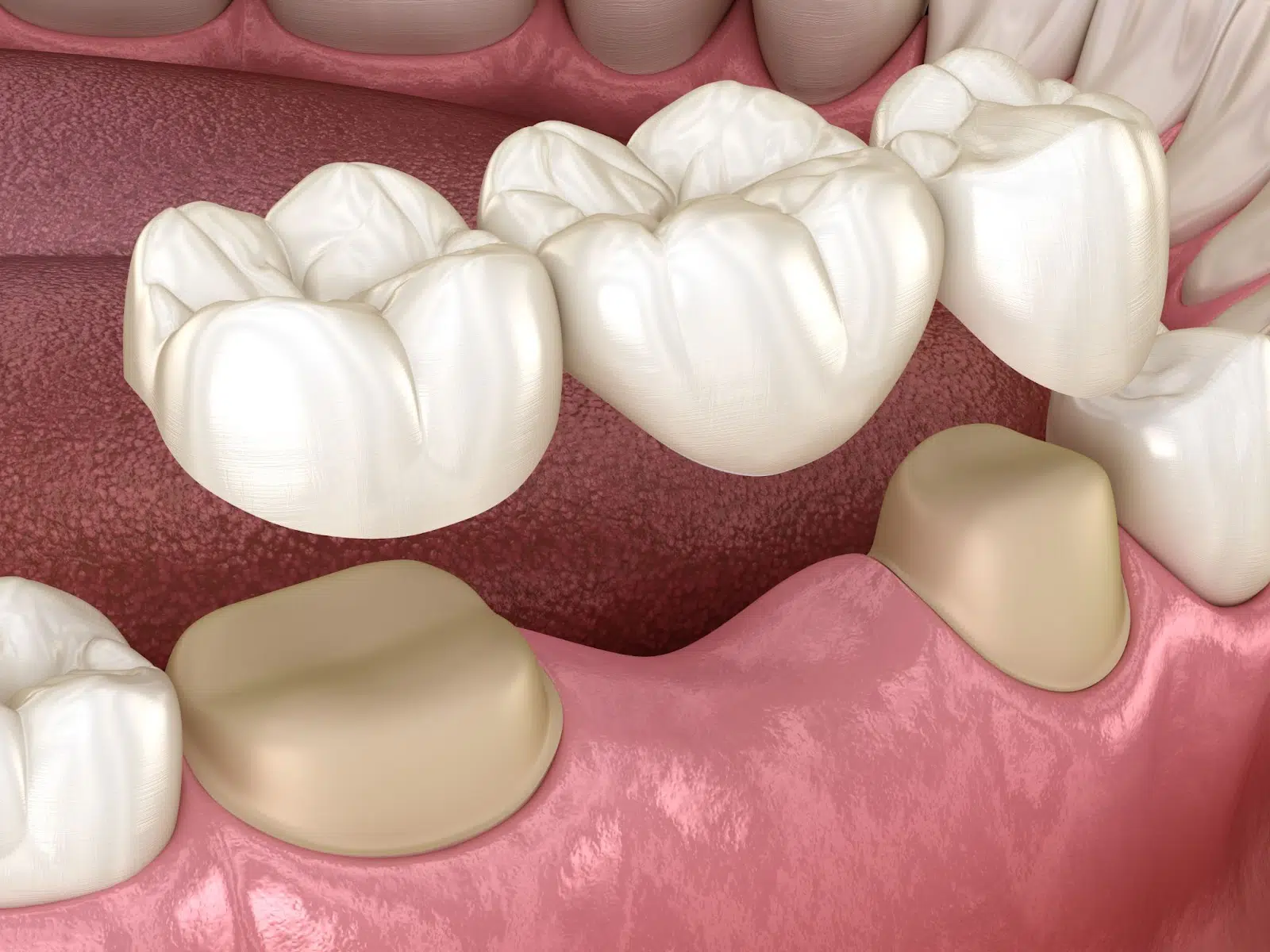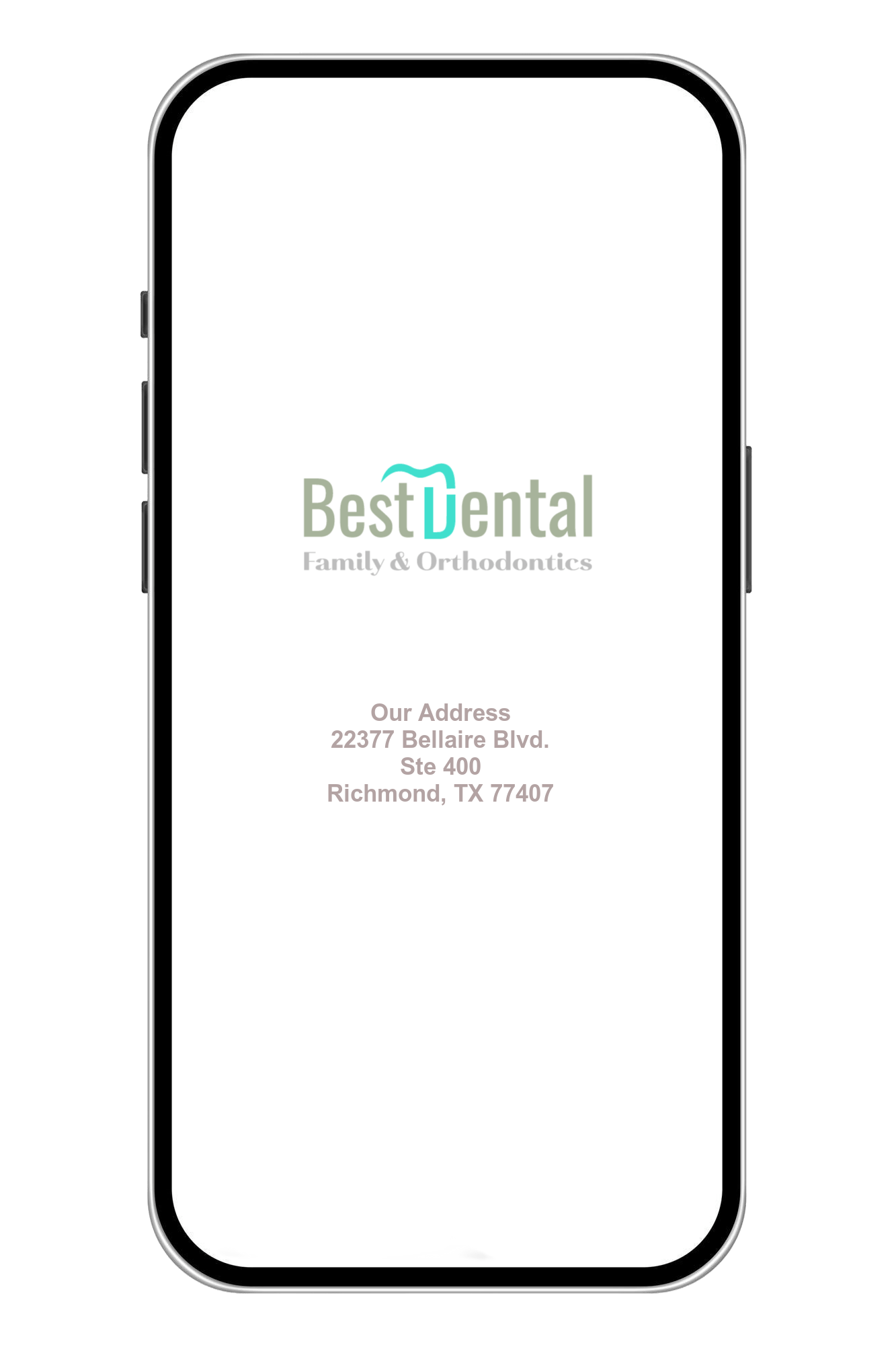Dental
Bridges
Katy, TX
Affordable Dental Bone Bridges For Katy Residents
f you're in search of a trusted and experienced dentist for dental bridges in Katy, Texas, look no further than Dr. Jasmine Naderi at Best Dental. Dr. Naderi is dedicated to providing top-notch dental care and has earned a stellar reputation for her expertise in restorative dentistry, including the art of dental bridges. With a commitment to patient comfort and satisfaction, Dr. Naderi and her skilled team at Best Dental offer a welcoming and state-of-the-art dental practice where you can regain your smile's natural beauty and functionality. Whether you're missing one tooth or several, Dr. Naderi is here to help you achieve a healthy, radiant smile through the finest dental bridge treatments Katy, TX has to offer. Discover the difference that compassionate care and professional excellence can make in your dental health journey.
What Is It?
What is a dental bridge, and how does it work to replace missing teeth?
A dental bridge is a restorative dental appliance designed to replace missing teeth by bridging the gap between natural teeth or dental implants. It consists of one or more artificial teeth, known as pontics, which are anchored in place by crowns placed on adjacent healthy teeth, called abutments. Dental bridges not only restore the aesthetic appearance of a complete smile but also serve a functional purpose. They help maintain proper alignment of surrounding teeth, prevent shifting, and improve biting and chewing abilities. Additionally, bridges provide support to facial structures and contribute to overall oral health, making them a popular solution for individuals with missing teeth.
The Right Choice?
Is a dental bridge the right solution for my specific case, or are there other alternatives I should consider?
Determining the right solution for your specific case depends on various factors, such as the number of missing teeth, the condition of surrounding teeth, your overall oral health, and your personal preferences. Dental bridges are a suitable option when you have one or more missing teeth and healthy adjacent teeth that can support the bridge. However, alternative solutions like dental implants, removable partial dentures, or implant-supported dentures may be more appropriate in some situations.

Can you explain the different types of dental bridges available, and which one would be most suitable for me?
There are several types of dental bridges available, each designed to address specific dental needs. The primary types of dental bridges include:
- Traditional Dental Bridge: This is the most common type, consisting of pontics (artificial teeth) anchored to adjacent natural teeth with dental crowns.
- Cantilever Bridge: In this type, the pontic is attached to a single adjacent tooth, rather than two, making it suitable when there is only one healthy abutment tooth available.
- Maryland Bridge (Resin-Bonded Bridge): These bridges use a metal or porcelain framework bonded to the back of adjacent teeth with minimal alteration to the natural teeth. They are a conservative option.
- Implant-Supported Bridge: This type of bridge is anchored to dental implants surgically placed in the jawbone, making it an ideal solution for multiple missing teeth without relying on natural teeth for support.
To determine which type is most suitable for your case, a dentist like Dr. Jasmine Naderi in Katy, TX, will perform a comprehensive evaluation of your oral health, the location of missing teeth, the condition of adjacent teeth, and your specific goals. Your choice will depend on factors such as durability, aesthetics, cost, and long-term success. A personalized consultation with an experienced dentist will help identify the best bridge type for your unique needs.
What is the procedure for getting a dental bridge, from the initial consultation to the final restoration placement?
The process of getting a dental bridge typically involves several steps, starting with the initial consultation and concluding with the final restoration placement:
- Initial Consultation: The journey begins with a consultation with your dentist, in this case, Dr. Jasmine Naderi at Best Dental in Katy, TX. During this visit, you’ll discuss your dental concerns and goals. Dr. Naderi will examine your oral health, assess the condition of the abutment teeth that will support the bridge, and determine which type of bridge is most suitable for your needs. X-rays or impressions may be taken to provide a comprehensive view of your dental structure.
- Preparing the Abutment Teeth: If you and your dentist decide that a traditional dental bridge is the right choice, the next step involves preparing the abutment teeth. This entails removing a portion of the enamel from these teeth to make room for the crowns that will support the pontic(s). Local anesthesia is administered to ensure your comfort during this process.
- Bridge Fabrication and Placement: After preparing the abutment teeth, impressions of your teeth are taken, and a dental laboratory creates your custom bridge. In the interim, a temporary bridge may be placed to protect your prepared teeth. Once your permanent bridge is ready, you return to the dental office for the final placement. Dr. Naderi will ensure that the bridge fits properly, matches your natural teeth in color and shape, and is comfortable. The bridge is then cemented in place, restoring your smile and improving your ability to chew and speak effectively.
The process of getting a dental bridge typically spans several weeks to ensure that the final restoration is precise and tailored to your unique dental needs. Dr. Jasmine Naderi and her team at Best Dental will guide you through each step with expertise and care, ultimately helping you regain a beautiful, functional smile.

How long can I expect a dental bridge to last, and what is the lifespan of the materials used?
The lifespan of a dental bridge can vary depending on several factors, including the type of bridge, the materials used, your oral hygiene practices, and your overall oral health. On average, a well-maintained dental bridge can last anywhere from 5 to 15 years or even longer in some cases. Here’s a breakdown of factors influencing the longevity of dental bridges:
- Material Quality: The materials used for dental bridges, such as porcelain, zirconia, or metal alloys, play a significant role in determining their lifespan. High-quality materials tend to be more durable and can last longer.
- Oral Hygiene: Good oral hygiene is crucial for maintaining the health of the supporting abutment teeth and preventing decay or gum disease. Proper brushing, flossing, and regular dental check-ups are essential to prolong the life of your bridge.
- Wear and Tear: Bridges can experience normal wear and tear over time, especially if they are subjected to heavy biting forces. Avoiding habits like biting on hard objects and grinding your teeth can help preserve the bridge.
- Adjacent Teeth Health: The health of the abutment teeth, which support the bridge, is essential. If these teeth develop issues like decay or gum disease, it can impact the bridge’s longevity.
- Proper Fit and Placement: A well-fitted and properly placed bridge is less likely to experience premature failure. This highlights the importance of choosing an experienced dentist like Dr. Jasmine Naderi at Best Dental in Katy, TX, for your bridge procedure.
During your consultation, Dr. Naderi will discuss the specific materials used for your bridge and provide guidance on how to maintain it for optimal longevity. Regular dental check-ups and good oral care are essential to ensure that your dental bridge continues to function effectively and lasts as long as possible.
More FAQs About Dental Bridges For Katy Residents
For More Information About Dental Bridges In Katy, TX Contact Our Team Today!
We look forward to hearing from you.
